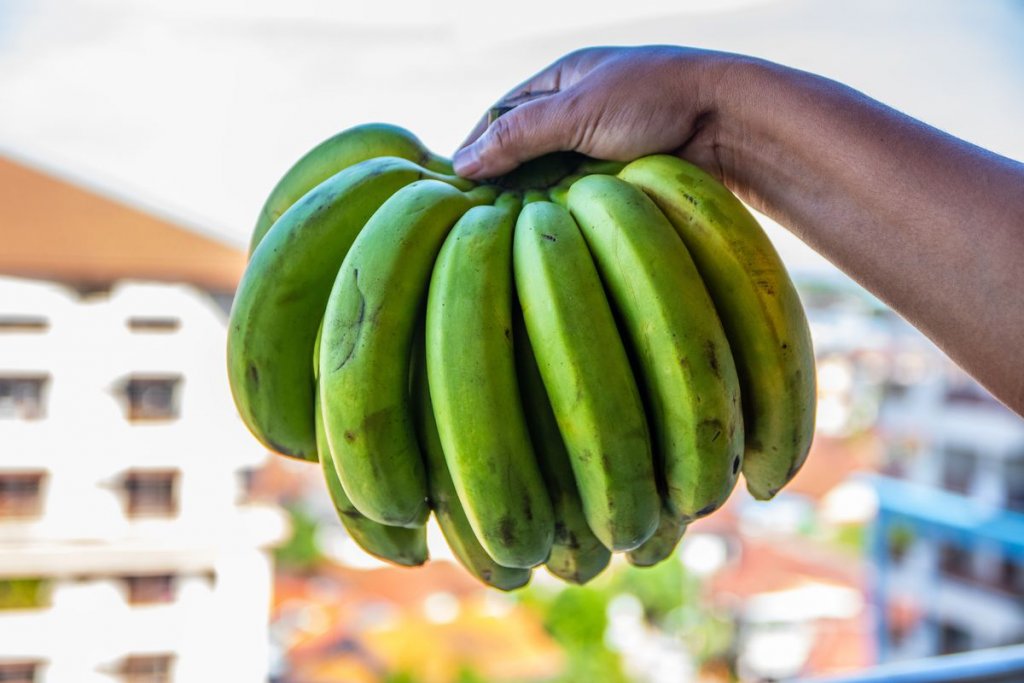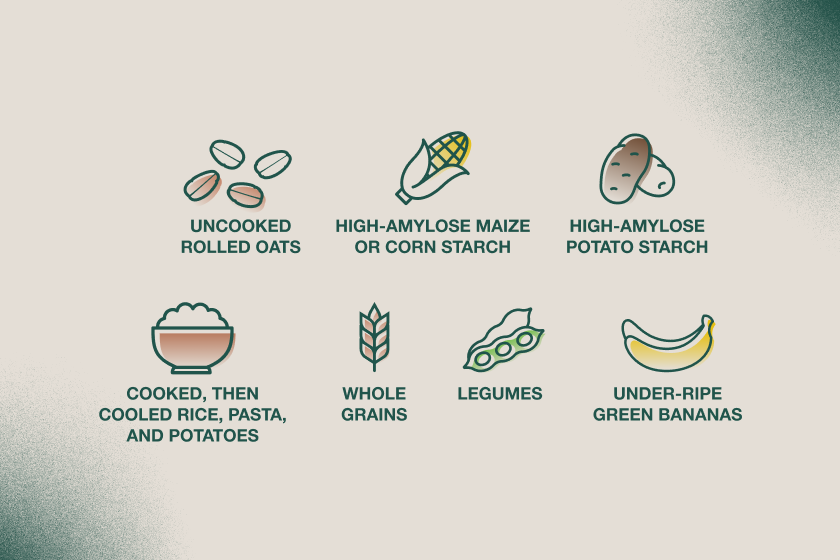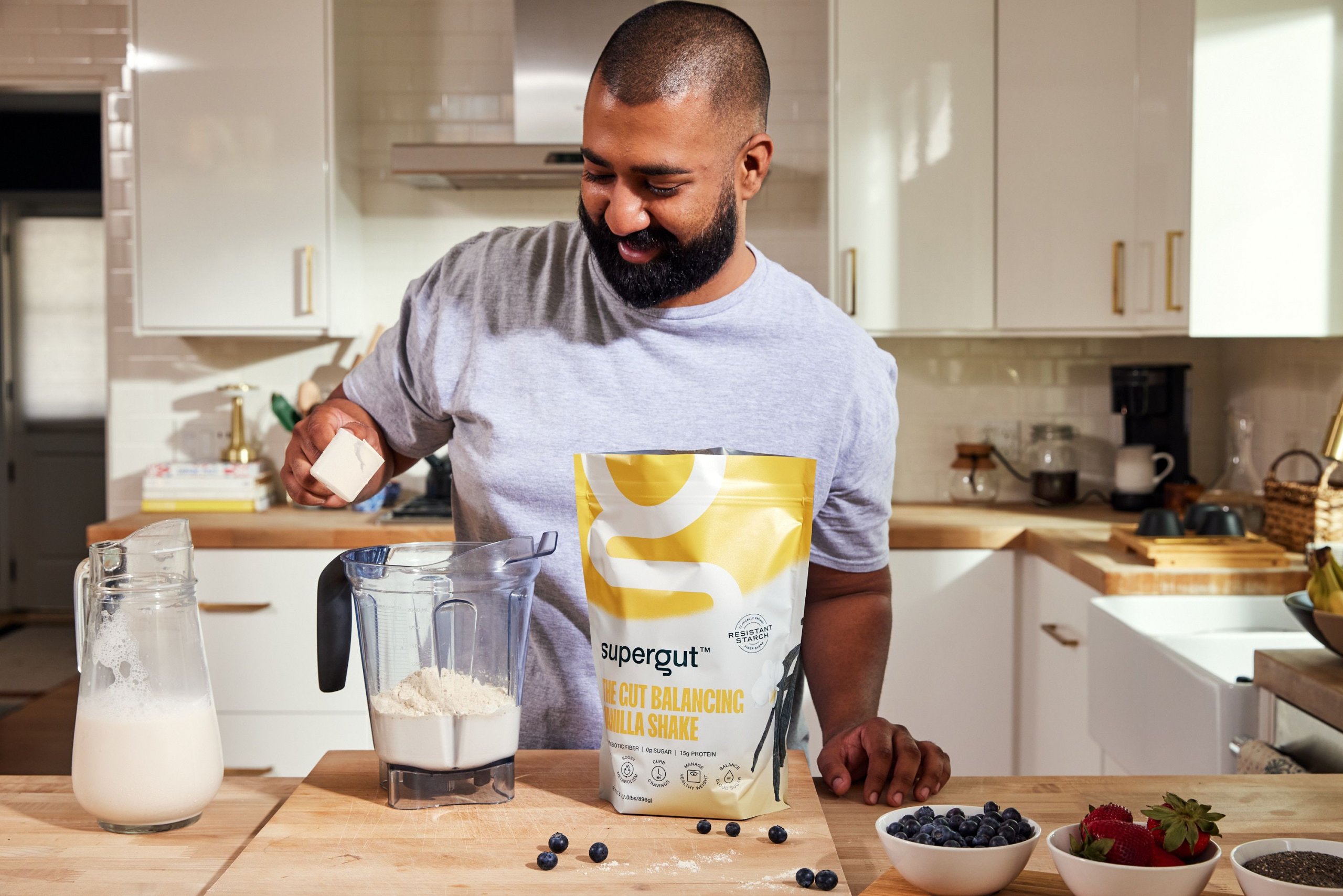READ TIME: 6 MINUTES —
In this article, we’ll cover the following topics:
- What Is Resistant Starch in the First Place?
- So, Is Resistant Starch Good For You?
- Why Is Resistant Starch Good For You? Benefits Explained
- How Do You Get Resistant Starch in Your Diet?
- Food vs Supplements: Is One Method Better For You?
- Keep Things Simple – Opt for Resistant Starch Supplements!
- Closing Thoughts
Here’s the thing: resistant starch is VERY good for you.
Maybe you’ve never heard of this powerful plant-based superfood before. Maybe you’re wondering how something that’s actually a carbohydrate can be so beneficial when we’ve been taught to believe “all carbs are evil.”
But the truth is, resistant starch is a unique dietary fiber that can do wonders for your overall health. Found in starchy foods like raw potatoes, green bananas, whole grains, and legumes, resistant starch may be underrated, but it’s anything but an underperformer.
According to some data, it can lower the things you want lower (like cholesterol, blood sugar, and weight). And increase the things you want higher (energy, sleep, better bowel movements, and more!).
Read on for a rundown of why resistant starch is good for you.
What Is Resistant Starch in the First Place?

Resistant starch is a specific type of carbohydrate and dietary fiber that “resists” digestion in the small intestine. Once it bypasses digestion, it then travels mostly intact all the way to your colon to be consumed by friendly bacteria in your gut.
Normally, when you ingest foods — especially simple carbohydrates — they’re immediately broken down into glucose. This can cause sugar spikes and crashes. Or worse, consistently high blood sugar levels can lead to, or be signs of, health conditions like diabetes.
With RS, however, your digestive enzymes can’t easily break down these plant fibers. For one cellular or molecular reason or another, the five different types of resistant starch decide to channel their inner Tom Petty and simply “won’t back down.”
Once these starches end up in your gut, however, that’s when the magic happens. Here, resistant starch becomes a food source for the friendly bacteria in your microbiome. As the bacteria feed, the resistant starch ferments. As the resistant starch ferments, all sorts of positive “chain” reactions start to happen — most notably, the release of metabolites called short-chain fatty acids (SCFAs).
These SCFAs, like butyrate, are unsung health heroes across a number of areas. They play a huge role in strengthening your gut barrier wall, boosting your immune system, fighting inflammation, and possibly improving brain health.
So, Is Resistant Starch Good for You?
Right up there with sleep and exercise, maintaining a diet of high-fiber whole foods and RS is one of the best things you can do for your overall health.
This isn’t some baseless claim either. More than 200+ clinical studies have shown that consuming foods high in resistant starch can do wonders for your overall metabolic health.
Why Is Resistant Starch Good for You? Benefits Explained
From better gut health to improved blood sugar control, the health benefits of resistant starch are wide-ranging.
A few scientifically-validated health benefits include:
- Regulating appetite and curbing cravings
- Preventing blood sugar and insulin spikes
- Maintaining an ideal weight
- Improving digestion and regularity
There are also early signs in research suggesting RS may help with:
- Enhancing energy, mood, and sleep
- Improving immunity and inflammation
In short, RS is good for you because it helps rebalance your gut microbiome. And as is becoming increasingly clear, good gut health is key to good overall health.
How Do You Get Resistant Starch in Your Diet?

Quite frankly, getting enough RS in your diet is tough. And most of us probably aren’t succeeding. The foods with the highest concentrations of RS simply aren’t that prevalent in modernized western diets. The ones that are prevalent unfortunately lose a lot of their RS during fairly standard food prep.
For instance, raw potatoes are packed with RS; cooked potatoes not as much. Green bananas are loaded with RS; yellow bananas not as much. Cooked then cooled rice or potatoes is chock-full of RS; merely cooked rice or potatoes not as much. You get the point.
The average American only gets about 3-8 grams of resistant starch per day. And while there aren’t any precise recommendations around how much RS specifically you should be getting, we do know that only 5% of Americans consume enough fiber in general.
Consuming more resistant starch is an optimal way to close the fiber gap from 16 grams (the average amount Americans typically get per day) to the daily recommended intake of 19-38 grams. Foods high in resistant starch include:
- Green bananas or plantains
- Uncooked rolled oats
- High-amylose maize or corn starch
- High-amylose potato starch
- Cooked and cooled potatoes or rice
- Beans, lentils, and other legumes
- Seeds and nuts
Food vs Supplements: Is One Method Better for You?
In general, striving for a diet rich in whole foods is a good idea. Trouble is, a whole foods diet packed with all the various types of fibers and nutrients and plant diversity you need for optimal health isn’t always practical. There’s this little thing called “life” that has an uncanny knack for getting in the way.
At which point, the question becomes: supplements or status quo? For most people “status quo” means a westernized diet of highly processed foods and nowhere near enough dietary fiber. (Remember how 95% of Americans don’t get enough daily fiber?)
So, the answer absolutely becomes turning to supplements. A resistant starch supplement is a fantastic way to fill in the gaps.
Keep Things Simple – Opt for Resistant Starch Supplements!

Don’t want to constantly cook and cool your foods? You don’t have to. Opting for a supplement is an easy and efficient way to incorporate more RS into your diet. And depending on the supplement, it can be downright delicious, too.
In fact, the word “supplement” to describe Supergut products truthfully feels a bit limiting. Our Shakes and Bars are real food after all. They’re loaded with real ingredients and packed with flavor. We believe in functional food. And generally think Hippocrates had it right when he said: “Let food be thy medicine and medicine be thy food.”
So, by all means, opt for RS supplements to help fill in the fiber gaps! But make sure these supplements are of the highest quality.
Closing Thoughts on Why RS is Good for You
In sum, resistant starch is a powerful plant-based superfood that has some pretty major health benefits.
It may not win any popularity contests compared to all the food fads du jour. But that’s because resistant starch is anything but a fad. It’s a prebiotic powerhouse that’s nourished humans for thousands of years.
If you’re looking for a way to regain control of your health, resistant starch might just be the secret missing ingredient.








